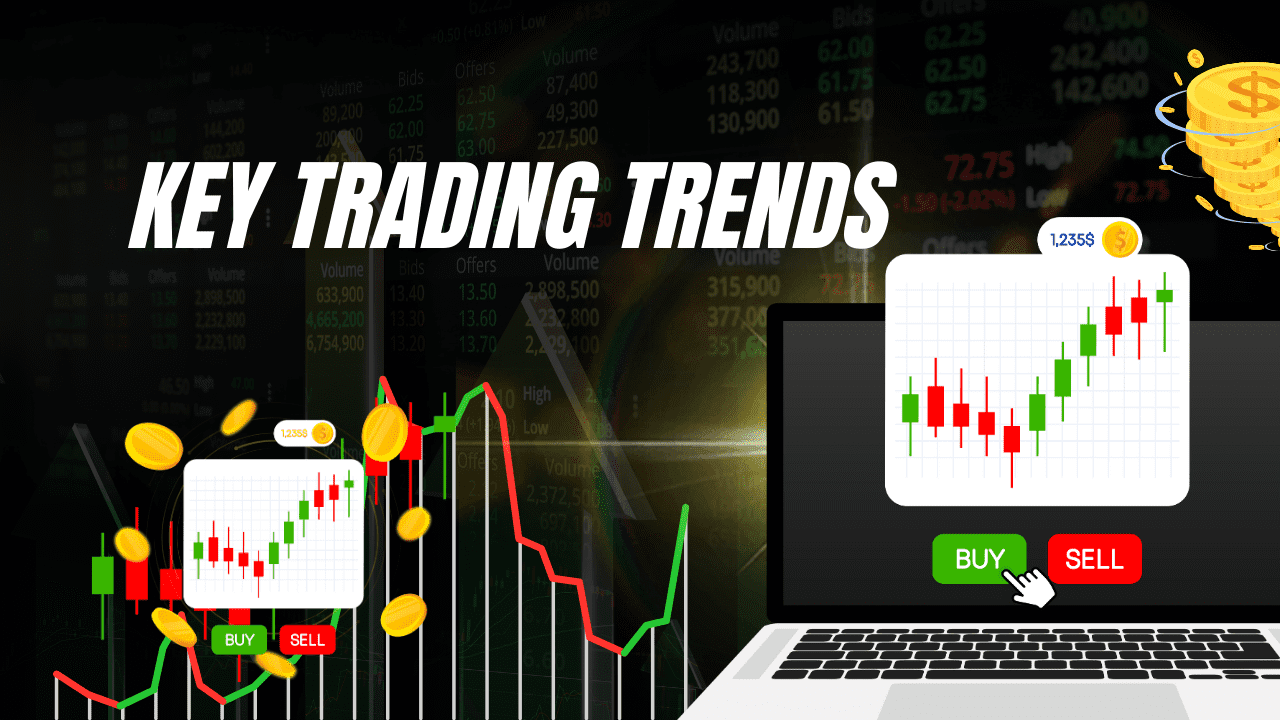The digital revolution has transformed global finance, but no market has felt the ripple effect more significantly than the United States. As cryptocurrencies continue to rise in both popularity and legitimacy, their impact is reverberating across every facet of U.S. trade and economic policy. From institutional investments to regulatory pressures, the key trading trends affecting U.S markets today are largely shaped by the growing influence of the crypto ecosystem.
- Institutional Crypto Adoption: Changing the Game
- Regulatory Developments and SEC Oversight
- Shift Toward Decentralized Finance (DeFi)
- Tokenization of Real-World Assets
- U.S. Dollar and Stablecoins: A Digital Tug-of-War
- Global Competition: China, Europe, and Emerging Markets
- Technological Innovations in Blockchain Infrastructure
- Retail Investor Behavior and Meme Culture
- Conclusion: Navigating the New Crypto-Influenced U.S. Market
In this article, we’ll explore the key trading trends affecting U.S financial markets, particularly through the lens of crypto assets, blockchain integration, and emerging global competition.
Institutional Crypto Adoption: Changing the Game
Over the past few years, institutional investors have moved from cautious curiosity to aggressive participation in the crypto space. Wall Street giants like BlackRock, Fidelity, and Goldman Sachs are now offering Bitcoin ETFs or integrating blockchain technology into traditional trading platforms.
This institutional influx is one of the trading trends affecting U.S markets as it brings legitimacy, liquidity, and long-term capital into the crypto ecosystem. With regulatory green lights (such as the SEC’s recent approvals of Bitcoin and Ethereum ETFs), institutional crypto adoption is reshaping everything from derivatives to long-term treasury strategies.
Regulatory Developments and SEC Oversight
Regulation—or the lack thereof—remains one of the most powerful key trading trends affecting U.S crypto markets. In 2024 and moving into 2025, the SEC, CFTC, and other federal bodies have intensified their oversight of crypto assets.
Issues such as:
- Classifying cryptocurrencies as securities or commodities
- Enforcement actions against exchanges like Binance and Coinbase
- Stablecoin legislation under review by Congress
…are all contributing to increased uncertainty and volatility. While clearer guidelines could attract more institutional investors, excessive regulation risks stifling innovation. The balance between innovation and investor protection is still being negotiated, and how this unfolds will significantly shape the future of U.S. crypto trading.
Shift Toward Decentralized Finance (DeFi)
DeFi platforms, which eliminate intermediaries and allow peer-to-peer transactions, have emerged as a disruptive force. The U.S. has witnessed a significant increase in DeFi usage, especially among tech-savvy millennials and Gen Z investors.
This trend challenges the traditional centralized financial institutions and creates a whole new landscape of lending, borrowing, and trading digital assets. The popularity of DeFi protocols like Uniswap, Aave, and Compound illustrates another major key trading trend affecting U.S market participation—one where financial power is decentralized and democratized.
Tokenization of Real-World Assets
Another notable trend is the tokenization of real-world assets (RWA), such as real estate, art, and commodities. By issuing blockchain-based tokens representing ownership in physical assets, U.S. firms are finding new ways to boost liquidity, reduce friction, and open up new revenue streams.
The rise of asset tokenization platforms like Polymath, Securitize, and tZERO has influenced how American investors diversify their portfolios. This evolving financial instrument marks a key intersection of traditional finance and crypto, and stands as one of the innovative trading trends affecting U.S markets.
U.S. Dollar and Stablecoins: A Digital Tug-of-War
The role of the U.S. Dollar as the global reserve currency is now facing a subtle but growing challenge from stablecoins such as USDT (Tether) and USDC (Circle). These digital dollar equivalents are used extensively in global crypto trading, often bypassing traditional banking systems.
With over $100 billion in market cap between them, these stablecoins are a vital part of the key trading trends affecting U.S dollar dominance in crypto trading. The U.S. government is actively evaluating a Central Bank Digital Currency (CBDC) to stay ahead in the race, but the private sector is currently leading the charge.
Global Competition: China, Europe, and Emerging Markets
While the U.S. is a leading crypto innovator, global competition is intensifying. Countries like China are pushing forward with digital yuan initiatives, while Europe is advancing regulatory frameworks through MiCA (Markets in Crypto-Assets Regulation).
These developments are among the geopolitical basic trading trends affecting U.S crypto policies, as America must now balance regulation, innovation, and global competitiveness. If the U.S. takes too long to provide a clear legal framework, it risks losing ground to more agile jurisdictions.
Technological Innovations in Blockchain Infrastructure
Blockchain scalability, interoperability, and energy efficiency are critical to the next phase of crypto adoption. Projects like Ethereum 2.0, Solana, and Layer-2 solutions like Optimism and Arbitrum are solving key pain points.
These technological shifts not only affect crypto but also impact how traditional assets are traded, settled, and managed. As a result, infrastructure innovation has become one of the foundational trading trends affecting U.S trading practices.
Retail Investor Behavior and Meme Culture
Retail participation in crypto markets, powered by platforms like Robinhood, Coinbase, and Reddit-driven forums, continues to influence short-term price movements and trading volume. Meme coins like Dogecoin and Shiba Inu reflect how sentiment and virality are now part of trading dynamics.
The democratization of trading and the rise of “investainment” are behavioral key trading trends affecting U.S markets, blending social media with financial decision-making.
Conclusion: Navigating the New Crypto-Influenced U.S. Market
The intersection of cryptocurrency and U.S. trading markets has created a perfect storm of opportunity and disruption. From institutional investment to regulatory oversight, from decentralized finance to global competition, these trading trends affecting U.S economic and financial landscapes are not just temporary—they are transformative.
As we move forward, businesses, investors, and policymakers must stay informed and agile. The crypto frontier is here, and it is reshaping the core of how trading, investing, and even economic governance is done in the U.S.





